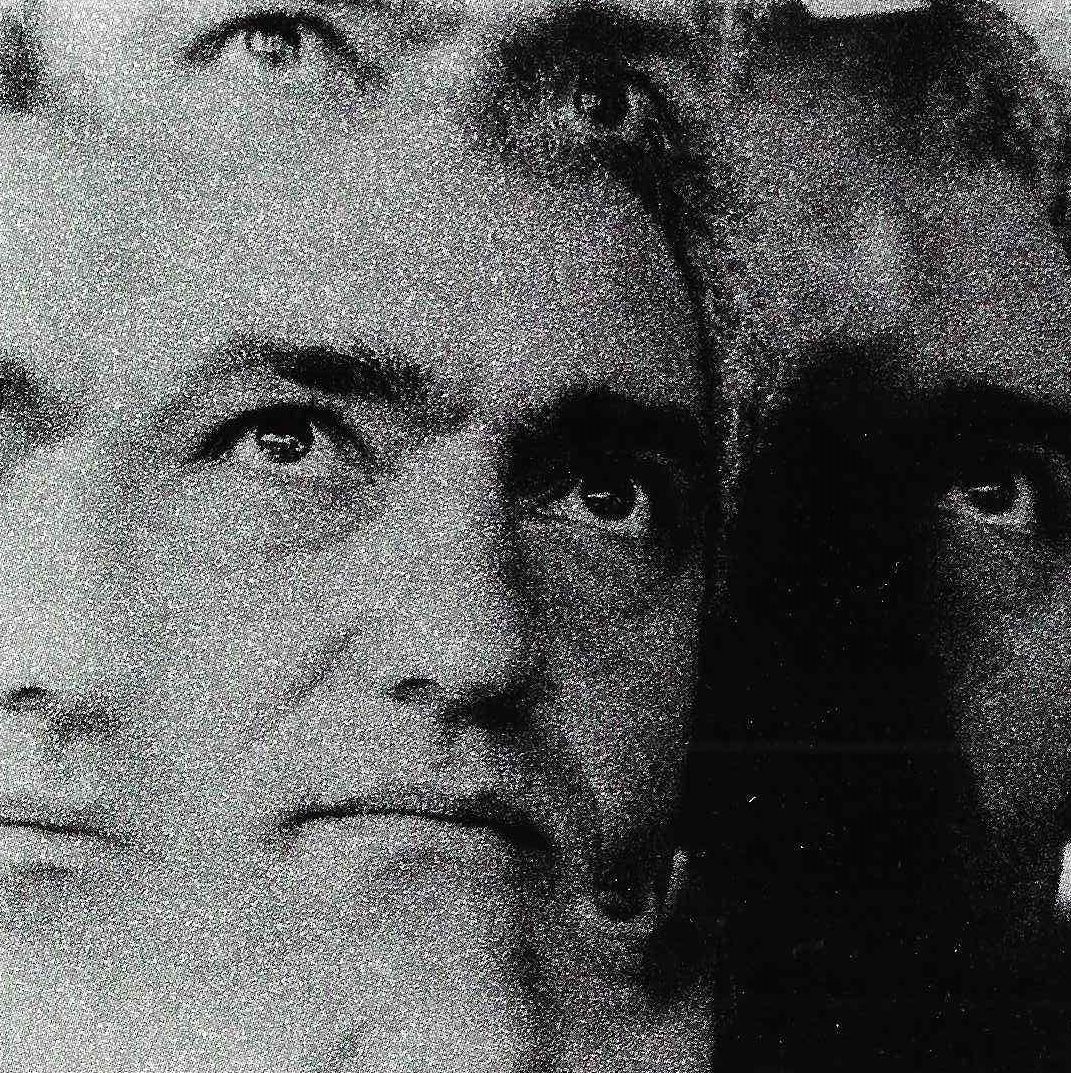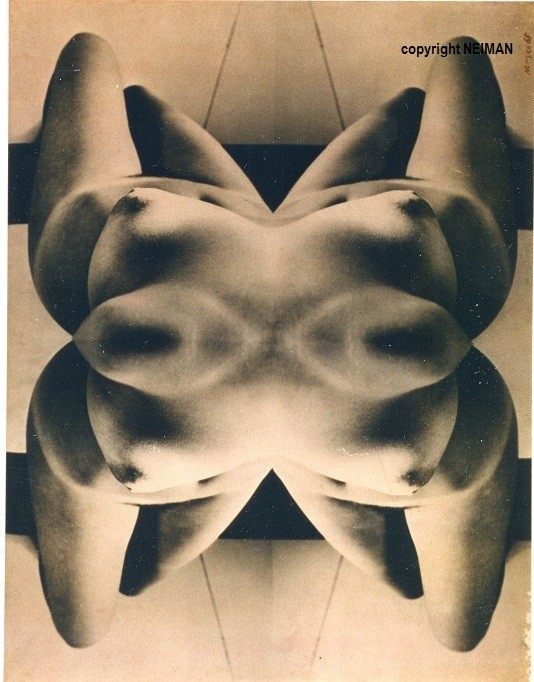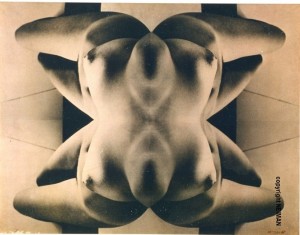
Œuvre réalisée en 1965 : report photographique sur toile sensibilisée, technique mise au point par Neiman, d’une de ses compositions kaléidoscopiques.
Ce motif a fait l’objet de plusieurs tirages sur métal et sur toile mais surtout, comme son titre le suggère, il a mis Neiman sur la voie de la reproduction de ses œuvres en trois dimensions. La variation d’un même motif est un principe de composition et de travail de l’artiste. Ce motif a pris forme dans une sculpture en marbre de Carrare, une sculpture en bronze fondue à Vérone, des aluminium dont l’un recouvert de peinture rouge.
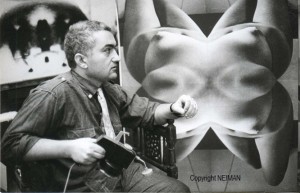

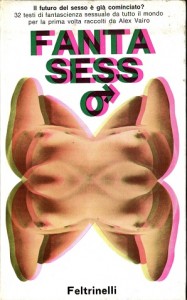
Ce motif paradigmatique de son œuvre est aussi l’un des premiers dont il a réalisé, dès 1965, des sortes de sérigraphies. Détouré, retouché, il en a tiré une planche en héliogravure, puis a effectué un tirage à plat, à la main, sur une presse à bras, comme on le ferait pour une lithographie : 20 exemplaires en jaunes, 20 exemplaires en rose, quelques noirs.
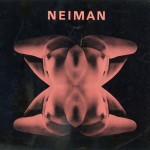
Cette toile intitulée « Sculpture » a été montrée à Paris en 1967, à Venise, Galerie II Canale, « Mec-Art » en 1968, à Lund « Erotic Art » en 1968, au japon, en 1968, à Essen en 1970 et à Cologne en 1971, elle est reproduite dans Plexus, n° 5 déc. 1966, p. 139, sur la couverture de Fantesses, Milan, Feltrinelli Edition, 1967.
Elle a aussi été exposée en 1973, lors de « Pop, post pop 1958-1973 », Espace Pierre Cardin, Contemporary Art Department – les artistes sélectionnés étaient: Albers, Alexander, Arman, Ben, Beuys, Cesar, Chamberlain, Colombo, Cyrsky, D’Apy, Dine, Dufo, Economos, Estes, Farhi, Flavin, Fromanger, Gilli, Hains, Hoffman, Jacquet, Journiac, Klein, Lewitt, Lichtenstein, Malaval, Mangolg, Miralda, Neiman, Nesbitt, Noblet, Oldenburg, Pistoletto, Rabascall, Raysse, Rivers, Salt, Schenck, Schonzeit, Stella, Warhol, Wesselmann.
Autant d’artistes que Neiman avait déjà eu l’occasion de croiser notamment lorsqu’il avait exposé à la Biennale de Paris en 1959, et à la Biennale de Paris en 1961 ou au Salons des comparaisons, et avec lesquels il exposera à nouveau lors d’autres manifestations internationales.
Cette toile a été accroché à la FIAC en 1987 au stand « Mec’Art » de la galerie Annunciata (Milan) avec des œuvres de Rotella, de Nikos, de Jacquet et de Bertini.
***
Work made in 1965: photographic transfer on sensitized canvas, a technique developed by Neiman, of one of his kaleidoscopic compositions.
This motif was the subject of several prints on metal and canvas, but above all, as its title suggests, it set Neiman on the path to reproducing his works in three dimensions. The variation of the same motif is a principle of composition and work of the artist. This motif has taken shape in a Carrara marble sculpture, a bronze sculpture cast in Verona, aluminum, one of which is covered in red paint.
This paradigmatic motif of his work is also one of the first of which he made, as early as 1965, a sort of serigraphy. He cut out and retouched it, printed a plate in heliogravure, then printed it flat, by hand, on a hand press, as one would do for a lithograph: 20 copies in yellow, 20 copies in pink, a few black.
This painting entitled « Sculpture » was shown in Paris in 1967, in Venice, Gallery II Canale, « Mec-Art » in 1968, in Lund « Erotic Art » in 1968, in Japan, in 1968, in Essen in 1970 and in Cologne in 1971, it is reproduced in Plexus, n° 5 Dec. 1966, p. 139, on the cover of Fantesses, Milan, Feltrinelli Edition, 1967.
It was also exhibited in 1973, during « Pop, post pop 1958-1973 », Espace Pierre Cardin, Contemporary Art Department – selected artists were: Albers, Alexander, Arman, Ben, Beuys, Cesar, Chamberlain, Colombo, Cyrsky, D’Apy, Dine, Dufo, Economos, Estes, Farhi, Flavin, Fromanger, Gilli, Hains, Hoffman, Jacquet, Journiac, Klein, Lewitt, Lichtenstein, Malaval, Mangolg, Miralda, Neiman, Nesbitt, Noblet, Oldenburg, Pistoletto, Rabascall, Raysse, Rivers, Salt, Schenck, Schonzeit, Stella, Warhol, Wesselmann.
So many artists that Neiman had already had the opportunity to cross paths with, notably when he had exhibited at the Paris Biennial in 1959, and at the 1961 Paris Biennial or at the Salons des Comparaisons, and with whom he would exhibit again at other international events.
This painting was hung at the FIAC in 1987 at the « Mec’Art » stand of the Annunciata Gallery (Milan) with works by Rotella, Nikos, Jacquet and Bertini.
***
Opera realizzata nel 1965: un trasferimento fotografico su tela sensibilizzata, una tecnica sviluppata da Neiman, di una delle sue composizioni caleidoscopiche.
Questo motivo fu il soggetto di diverse stampe su metallo e tela, ma soprattutto, come suggerisce il titolo, mise Neiman sulla strada della riproduzione delle sue opere in tre dimensioni. La variazione dello stesso motivo è un principio della composizione e del lavoro dell’artista. Questo motivo ha preso forma in una scultura in marmo di Carrara, una scultura in bronzo fuso a Verona, alluminio, uno dei quali è coperto di vernice rossa.
Questo motivo paradigmatico della sua opera è anche uno dei primi per i quali ha prodotto una specie di serigrafia nel 1965. Lo ritagliò e lo ritoccò, stampò una lastra in rotocalco, poi lo stampò in piano, a mano, su un torchio a mano, come si farebbe per una litografia: 20 copie in giallo, 20 copie in rosa, alcune in nero.
Questo quadro intitolato « Scultura » è stato esposto a Parigi nel 1967, a Venezia, Galerie II Canale, « Mec-Art » nel 1968, a Lund « Erotic Art » nel 1968, in Giappone, nel 1968, a Essen nel 1970 e a Colonia nel 1971, è riprodotto in Plexus, n° 5 dic. 1966, p. 139, sulla copertina di Fantesses, Milano, Edizione Feltrinelli, 1967.
Fu anche esposto nel 1973, durante « Pop, post pop 1958-1973 », Espace Pierre Cardin, Dipartimento di Arte Contemporanea – gli artisti selezionati erano: Albers, Alexander, Arman, Ben, Beuys, Cesar, Chamberlain, Colombo, Cyrsky, D’Apy, Dine, Dufo, Economos, Estes, Farhi, Flavin, Fromanger, Gilli, Hains, Hoffman, Jacquet, Journiac, Klein, Lewitt, Lichtenstein, Malaval, Mangolg, Miralda, Neiman, Nesbitt, Noblet, Oldenburg, Pistoletto, Rabascall, Raysse, Rivers, Salt, Schenck, Schonzeit, Stella, Warhol, Wesselmann.
Tutti artisti che Neiman aveva già avuto modo di conoscere quando aveva esposto alla Biennale di Parigi del 1959, alla Biennale di Parigi del 1961 o ai Salons des comparaisons, e con i quali avrebbe esposto di nuovo in altre manifestazioni internazionali.
Questo quadro è stato esposto alla FIAC del 1987 nello stand « Mec’Art » della galleria Annunciata (Milano) con opere di Rotella, Nikos, Jacquet e Bertini.
